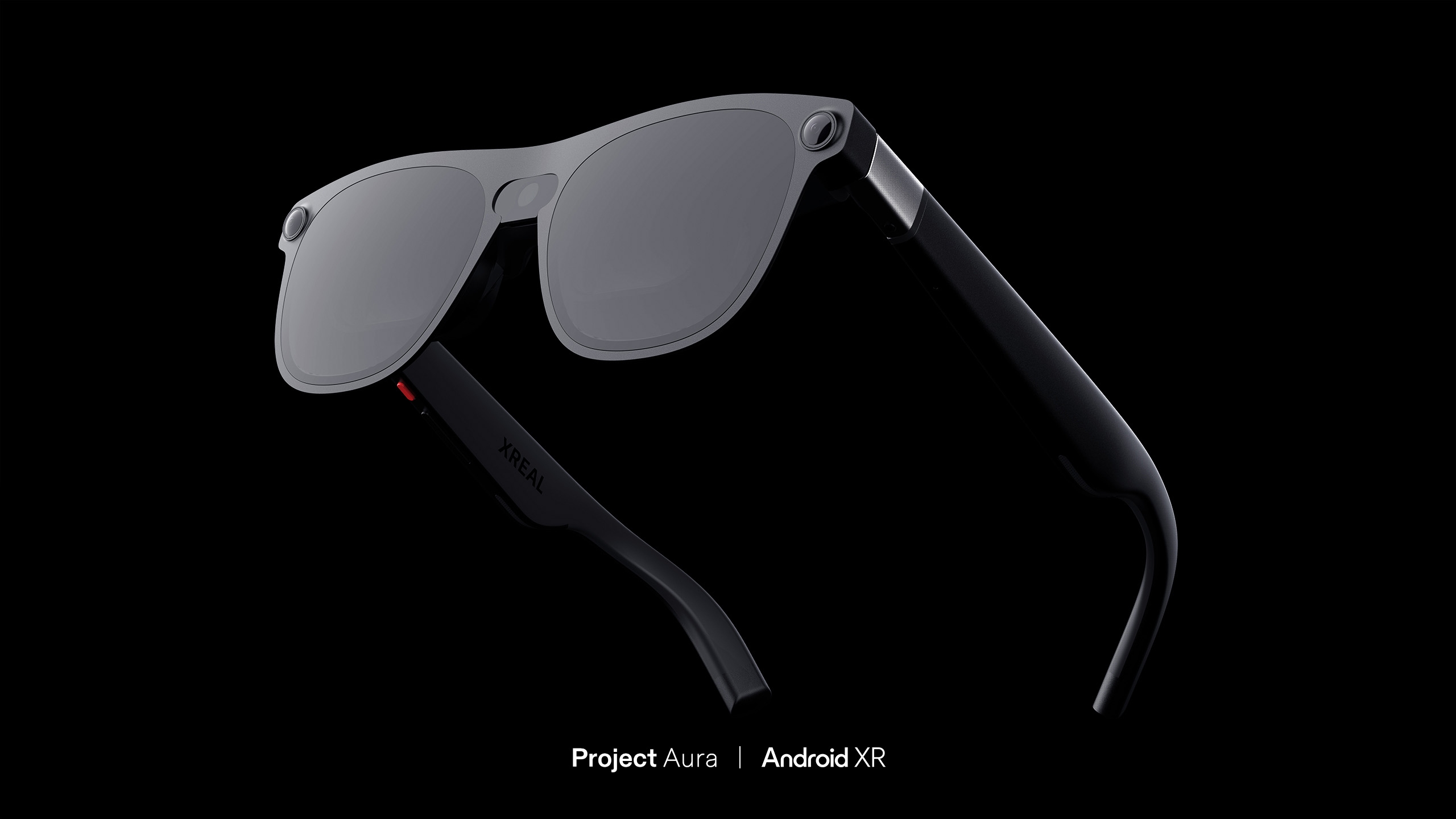Google and XREAL announce Project Aura, XR smart glasses for Android
XREAL's Project Aura emerges as the Android device to watch out for as XR glasses take a generational leap at Google I/O

Google I/O is a lot like Apple's WWDC. A staple of the tech calendar, where Google takes a moment to flaunt its advancements in software and AI, and show us what's on its way to Android devices over the coming year.
It's not often you'll see hardware steal the show. For that, you typically need to catch the company's Made By Google event later in the calendar year. However, this year is different.
It may not be of Google's own crafting, but Google I/O just gifted you the greatest reason to buy an Android device in years, and I'm not talking about a smartphone.
Unveiled at Google I/O on Tuesday, XREAL's Android XR-driven Project Aura XR glasses are the next major milestone for AR glasses — a technology I've been preaching about for some time now.
Let's gooooo! XREAL is at Google IO. Are you? pic.twitter.com/duAv8V108HMay 20, 2025
XREAL Project Aura: The white-hot glow of potential
The the naked eye, XREAL's Project Aura looks much like its recently released XREAL One AR glasses, with the optional XREAL Eye camera accessory built directly into the frames.
This means that we can expect Project Aura to not just offer AR experiences through its flattened birdbath optics, but for those visuals to be enhanced further with three and six-degrees of freedom (3/6DoF), allowing for immersive viewing experiences, similar to those offered by full headsets like Apple's Vision Pro or Meta Quest 3, which can anchor augmented elements in place and keep them there — even when turning your head or walking around.
Interestingly, what really sets Project Aura apart from its XREAL One/One Pro predecessors is the switch to a Qualcomm chipset from the company's proprietary X1 chip.
Sign up to receive The Snapshot, a free special dispatch from Laptop Mag, in your inbox.
On the switch, Senior Vice President and General Manager of XR at Qualcomm Technologies, Inc., Ziad Asghar, proudly boasts: “Qualcomm Technologies is excited to be powering XREAL’s new Android XR device,” further stating stating, "Working with XREAL, Snapdragon allows amazing immersive experiences to come to life in a unique optical see-through product.”
XREAL's Project Aura looks to be the perfect XR glasses to bring Google's vision for the future of AI assistants, Project Astra (as seen in the video above, showcased during last year's Google I/O event), to life, offering a mix of AI and AR tech to allow multi-modal AI models like Google Gemini to shine.
Qualcomm definitely has a history in AR and XR, with its Snapdragon chips powering the latest Meta Quest 3 and 3S headsets. But more than a snappy processor will be required if XREAL's XR glasses are to get off the ground properly. For that, you need only look at Project Aura's use of the new Android XR platform.
“Google is thrilled to welcome XREAL to the Android XR family and to build great XR experiences on Project Aura,” said Hugo Swart, Sr. Director, XR ecosystem at Google. And I'm certain that the feeling is mutual, as the one thing holding AR glasses back so far has been software. Android XR changes that — and it brings Google's Gemini AI along for the ride.
XREAL Co-founder Chi Xu agrees, stating in a press release: "We’ve always pushed the boundaries of what XR hardware can do — combining performance, comfort, and design into something people can wear every day ... Partnering with Google on Android XR takes this vision to the next level."
XREAL's partnership with Google on using the Android XR platform isn't just a shift to a more universally available platform, it's the kicking opening of the doors and an invitation to developers to take advantage of its hardware in new and interesting ways. As Xu sees it, "this is a breakthrough moment for real-world XR.”
I'm inclined to agree.
What's next
Today was just a glimpse at Project Aura, the second official device to make use of Android XR.
To hear more, we'll need to wait for the Augmented World Expo (AWE) in June. It's here that we can likely expect to hear more about its Qualcomm potential and XREAL's advancements in hardware.
But rest assured, this isn't a preview of a technology years from the market. XREAL has been developing some of the most advanced AR glasses on the market for years. Project Aura is likely to be in your hands, and on your face, well in advance of Meta's ambitious Orion glasses, that's for sure.
To stay looped into the project, you can subscribe to news on XREAL's Project Aura at the company's website.

I've been a long-time proponent of smart glasses, and Project Aura's blend of AR and AI could make it the first of its kind to really break through the perceived mainstream barrier and make smart glasses like this a staple of modern, everyday tech.
To many, my words have been wasted all too early. An overenthusiastic response to tech that is oftentimes off-handedly dismissed as something that needs more time to cook and mature.
While I disagree, I can see why people may hesitate. Smart glasses didn't exactly get off to the best of starts when Google Glass burst onto the scene in 2013.
However, Project Aura is something new. Something different. And, if there's a message to share with those who aren't sold on the idea of your face being the platform for the computer of the future, let me tell you: we're here.
More from Laptop Mag

Rael Hornby, potentially influenced by far too many LucasArts titles at an early age, once thought he’d grow up to be a mighty pirate. However, after several interventions with close friends and family members, you’re now much more likely to see his name attached to the bylines of tech articles. While not maintaining a double life as an aspiring writer by day and indie game dev by night, you’ll find him sat in a corner somewhere muttering to himself about microtransactions or hunting down promising indie games on Twitter.
You must confirm your public display name before commenting
Please logout and then login again, you will then be prompted to enter your display name.

